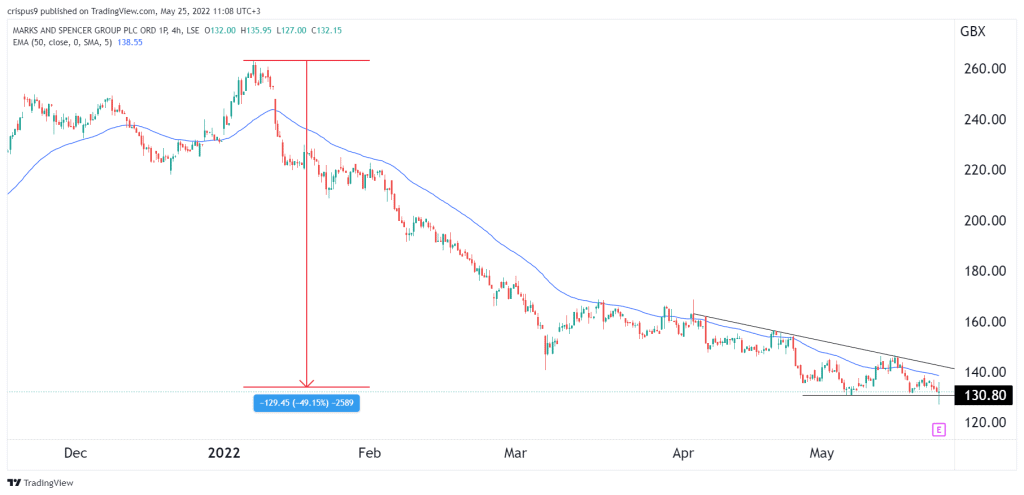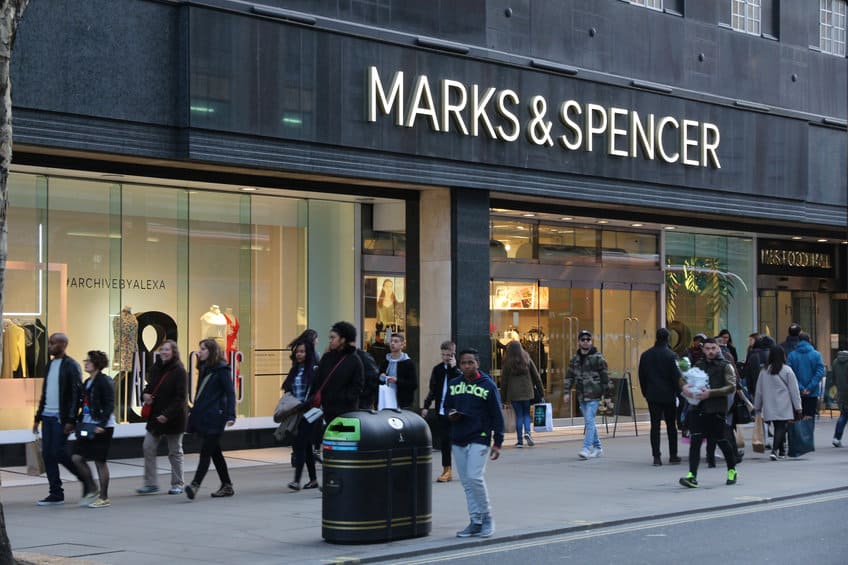- The Marks and Spencer share price moved sideways on Wednesday after the company published mixed annual results.
The Marks and Spencer share price moved sideways on Wednesday after the company published mixed annual results. The MKS stock is trading at 133p, which is about 5% above the lowest level this week. On the other hand, the Ocado share price tumbled by over 5%, becoming the worst-performing company in the FTSE 100. MKS has a joint venture with Ocado.
Retailers have been on edge in the past few days after the warnings by companies like Walmart, Khols, Abercombie & Fitch, and Target. These firms, which are often seen as best-in-class, said that they were seeing inflation have an impact on their business. They have simply been unable to shift all costs to their consumers. At the same time, they have been left with more workers than they need as growth slows.
In a statement, Marks and Spencer said that its profit before tax rose from £403 million to over £522 million in the financial year. Profit after tax was £309 million while food growth rose to 10.1%. At the same time, Ocado’s retail basket size continued to normalize as demand started slowing down. International sales surged to £250 million while Sparks has over 15 million members.
Marks and Spencer also completed the first half of its transformation. This process included transforming its food business and improving its clothing and home busines. Most importantly, the company has managed to reduce its total net debt from £1.8 billion to just £420 million. The company will likely continue growing in the coming months.
Marks and Spencer share price forecast
On the four-hour chart shows that the Marks and Spencer share price has been in a strong bearish trend as concerns about growth have remained. The stock has fallen by about 50% from its highest level in January this year. It has also formed a descending triangle pattern that is shown in black. Also, the stock moved below the 25-day moving average.
Therefore, with the retail sector struggling, there is a possibility that the shares will have a bearish breakout to 120p. The stop-loss for this trade is at 140p.




